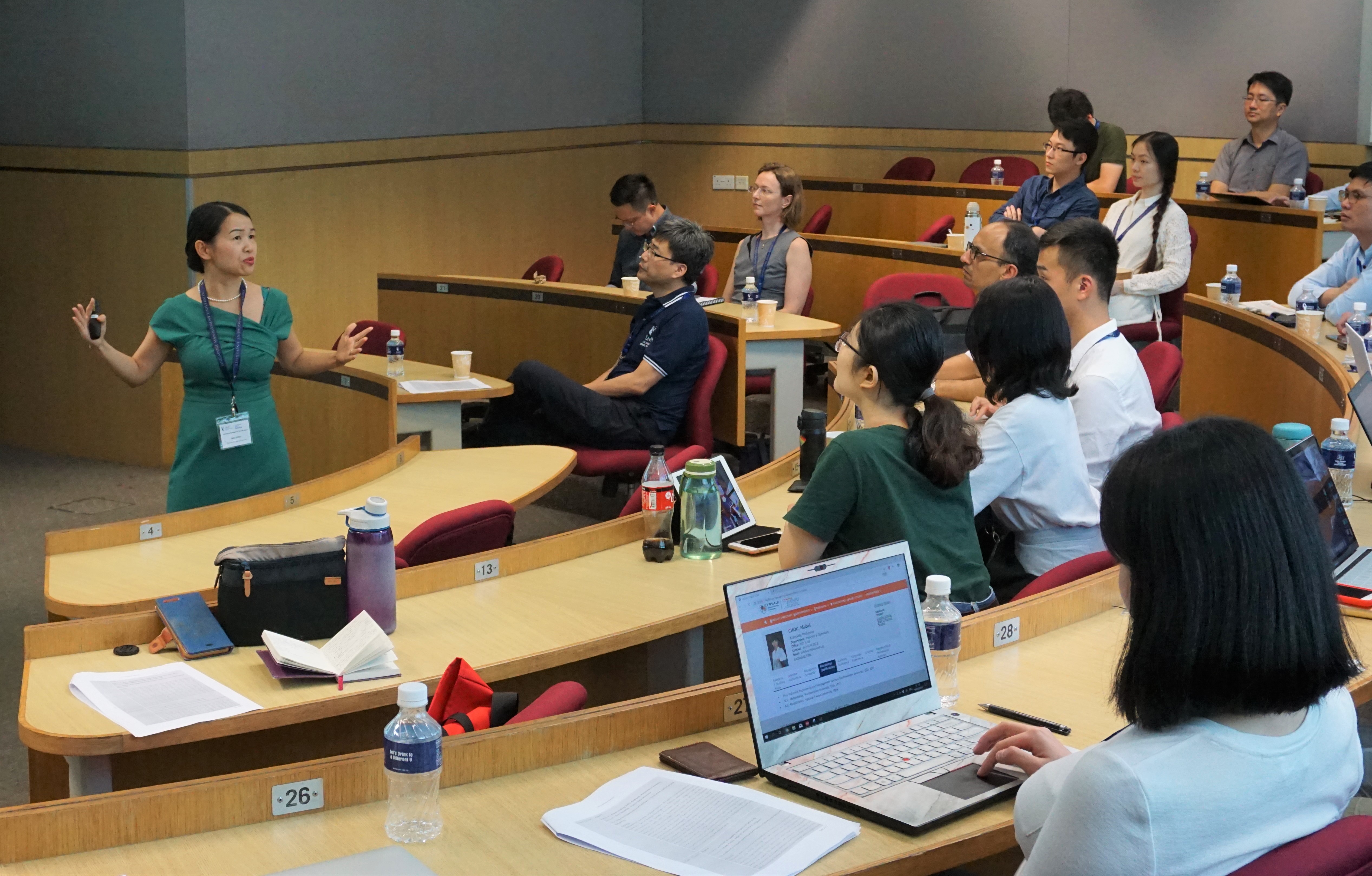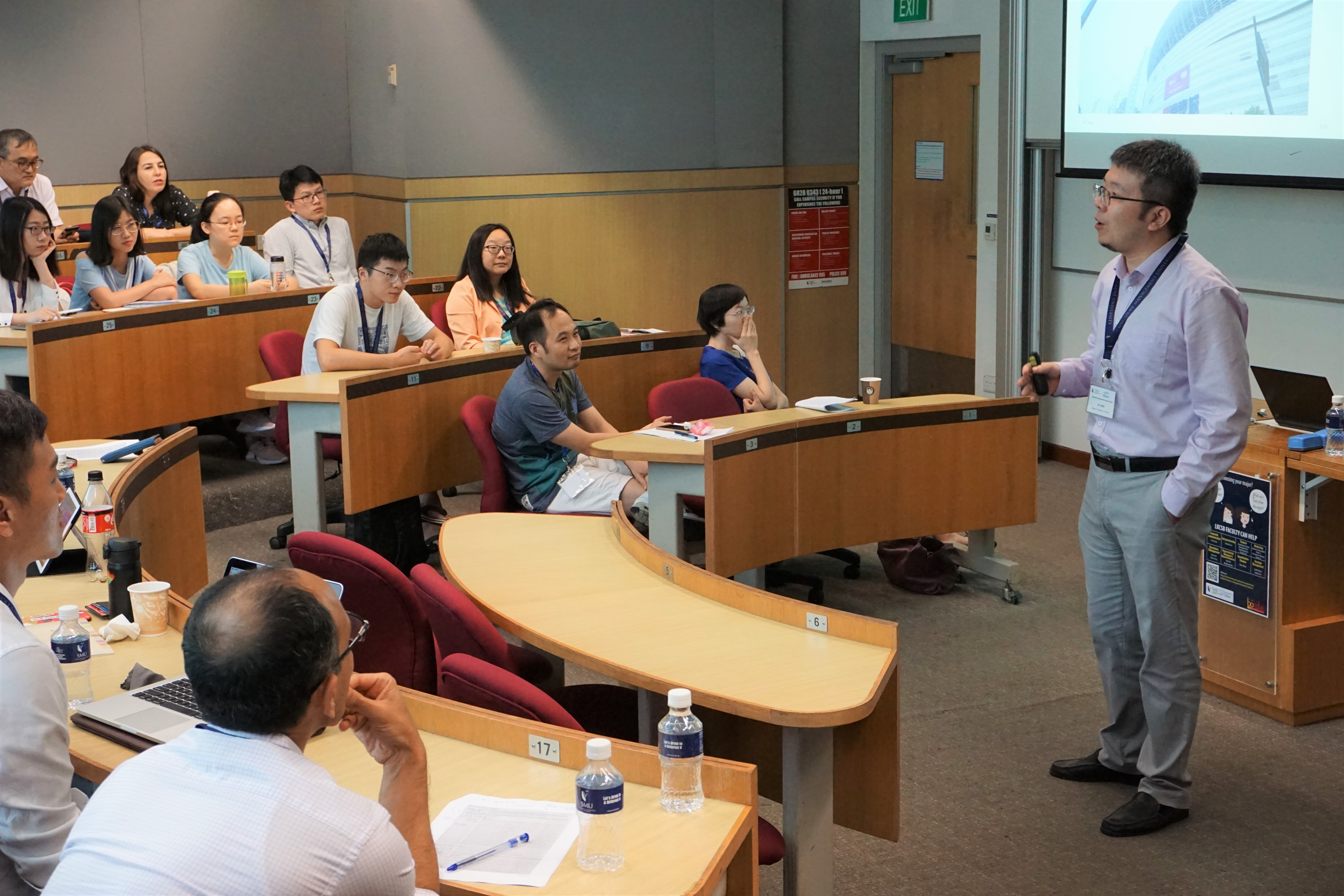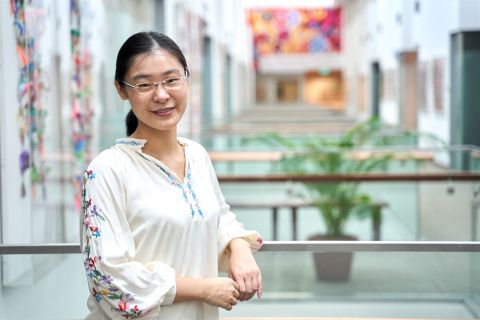
Above: SMU Assistant Professor Helen Zhou presenting her paper at the LKCSB Operations Management Summer Camp.
By Flora Teoh
SMU Office of Research & Tech Transfer – “Life is a game, boy. Life is a game that one plays according to the rules,” says Mr Spencer in JD Salinger’s novel The Catcher in the Rye. But life is governed by uncertainty, and so the rules are not always clear.
When making a decision, one could simply make a two-column list of the pros and cons involved, as Benjamin Franklin did in his “Prudential Algebra”. But this method would fall short in the face of complex questions, such as figuring out the optimal amount of fertiliser a farmer should use to grow this year’s strawberry crops, or how a retailer should convey product information to customers to maximise its profits.
These issues and more were discussed at the Operations Management Summer Camp, which took place on 16 August 2019 at the Singapore Management University (SMU) Lee Kong Chian School of Business. The summer camp, which has taken place yearly for almost a decade, has a unique format: SMU faculty members present their papers followed by a discussion in which distinguished researchers – several of them editors at major journals for Operations Management – present detailed feedback on the paper.
Avoiding food loss in farming
In the afternoon session, SMU Assistant Professor Helen Zhou Yangfang presented a paper titled “Integrated Optimisation of Fertilisation Application, Farmland Cultivation and Crop Harvesting”. Co-authored with SMU Associate Professor Onur Boyabatli and Dr Shao Lusheng from the University of Melbourne, the paper examines how a farmer’s profitability as well as world food security could be affected by decisions about fertiliser application, cultivation and harvesting.
“The fresh-produce industry has a value of close to US$100 billion a year. It is a huge industry that is growing at a much quicker rate than that of traditional crops such as corn and soybean,” said Professor Zhou.
With this meteoric growth come many challenges for farmers, one of which is the unpredictability of the yield. “For example, farmers might have a great yield because the sun has been favourable to them,” Professor Zhou explained. “But because the yield is so uncertain, farmers might not be prepared in the end to harvest, store and transport all of it.”
This inevitably leads to food loss from unharvested crops. When this happens, time and money invested in growing these crops are wasted. But the problem doesn’t stop there.
“Agricultural decisions also have implications for food security,” Professor Zhou emphasised, citing US statistics showing that about 6% of fruits and vegetables were left unharvested in 2011. “We need to think about the significance of this 6% loss in a billion-dollar industry, considering how many people don't have access to nutritious food.”
Given the complexity and uncertainty involved in agricultural decisions, the authors developed a unique two-stage stochastic programme able to integrate the outcome of all these decisions, using real-world statistics such as yield data from the US Department of Agriculture to calibrate their model. They were able to show that their integrated optimisation model was superior to commonly used agricultural heuristics, resulting in much higher than expected profits.
This model could guide farmers in making decisions for optimal profitability in addition to improved food security. “To the best of our knowledge, ours is the first paper that integrates decisions at multiple stages of agriculture within the same framework and also examines the implication for sustainability measures like food security,” Professor Zhou said.
When more information isn’t always better
Online retailing has made it possible for us to purchase groceries via the Internet, but not being physically present means that consumers rely greatly on product information online. With the gap between online and offline channels of retailing gradually closing, customers could be seamlessly provided with comprehensive product information no matter what channel they use.

Above: SMU Assistant Professor Fang Xin presenting his paper at the LKCSB Operations Management Summer Camp.
“Companies such as Alibaba are developing new technologies to make product description and consumer reviews consistent across online and offline channels of retailing,” said SMU Assistant Professor Fang Xin, who presented a paper titled “Product Description and Consumer Reviews in Omni-channel Retailing” in the afternoon session. Co-authored with SMU postgraduate student Deng Qiyuan and SMU Associate Professor Lim Yun Fong, the paper examines how product information could influence the retailer’s profitability when delivered through dual-channel or omni-channel modes.
Conventionally, information in online and offline channels of retailing have been kept separate, in what is called a dual-channel strategy. But omni-channel retailing enables product information such as product description and consumer reviews to be provided equally in both offline and online channels.
At first glance, omni-channel retailing might appear to be the best option for both consumers and retailers. However, Professor Fang and colleagues found that this was not always the case. By modelling the strategic interactions between consumers and retailers, they found that omni-channel retailing would only work in the retailer’s favour when there was scarce product information in its offline channel and when the consumer valuation of a product was low.
“When consumer valuation is high, customers would be willing to pay a high price for the product and make a purchase even if little product information was available,” he explained. Providing more information, as would occur with omni-channel retailing, could backfire on the retailer. “An offline customer may discover that the product is actually a poor fit and walk away from the purchase.”
“It’s not always the case that customers will buy a product after receiving more information,” said Professor Fang, whose findings indicate that retailers need to carefully consider the strategy of retailing they use for their products in order to protect their bottom line. “The benefit of a dual-channel strategy is flexibility. Retailers can provide information differently online and offline.”
Back to Research@SMU Aug 2019 Issue
See More News
Want to see more of SMU Research?
Sign up for Research@SMU e-newslettter to know more about our research and research-related events!
If you would like to remove yourself from all our mailing list, please visit https://eservices.smu.edu.sg/internet/DNC/Default.aspx

